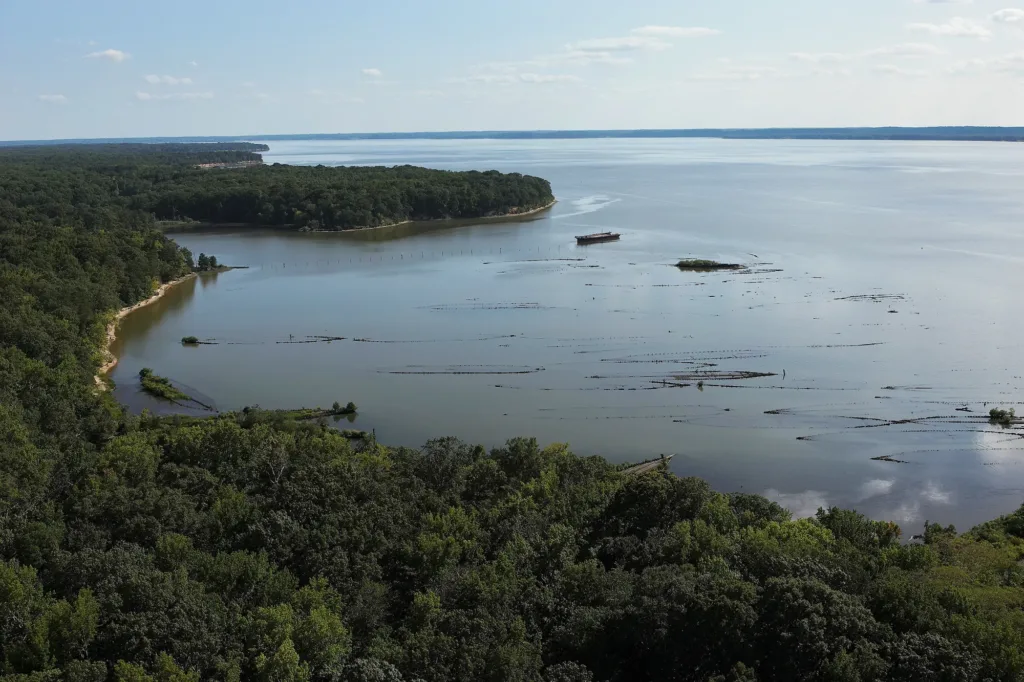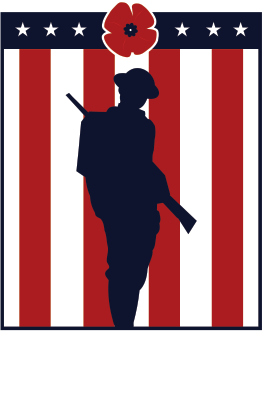Life Thrives on Maryland’s ‘Ghost Fleet’ of WWI-Era Shipwrecks
Published: 25 September 2025
By Andrea Tamayo
via the Scientific American website
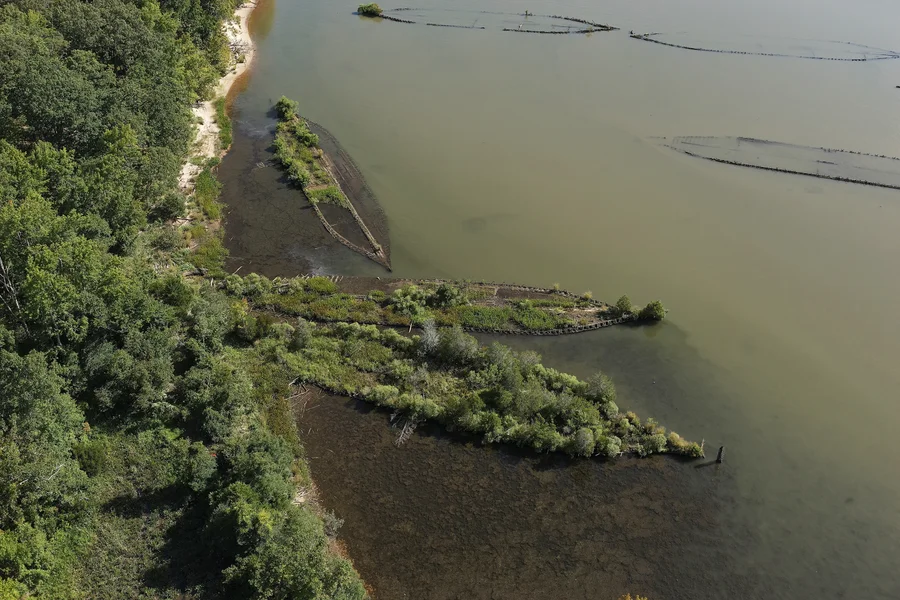
islands_forming_from_wrecks_in_mallows_bay
Wrecks near the coast in Mallows Bay are becoming islands, providing novel, human-influenced habitats for a variety of terrestrial and aquatic species. (Duke Marine Robotics and Remote Sensing Lab)
Nearly 100 years ago dozens of ships were abandoned in a shallow bay in the Potomac River. Today plants and animals are thriving on the skeletons of these vessels
In 1929 the Western Marine & Salvage Company moved a fleet of 169 World War I–era steamships to Mallows Bay, a shallow inlet in the Potomac River, where they were burned to make any salvageable materials easier to reach. Over time, a few ships were buried under the sediment while others floated away. Today the skeletons of 147 vessels—known as the “Ghost Fleet of Mallows Bay”—have turned into an ecological oasis, drone images reveal.
“I’m sure that this was, in many ways, environmentally catastrophic when it first happened,” says marine conservation biologist David Johnston, a co-author of a new study describing the area published in Scientific Data. “But life is so strong that it just takes that and makes it its own.” Johnston and his colleagues found birds, such as ospreys, nesting on wooden ruins, algae flourishing and providing nurseries for fish and trees erupting out of the sunken ships.
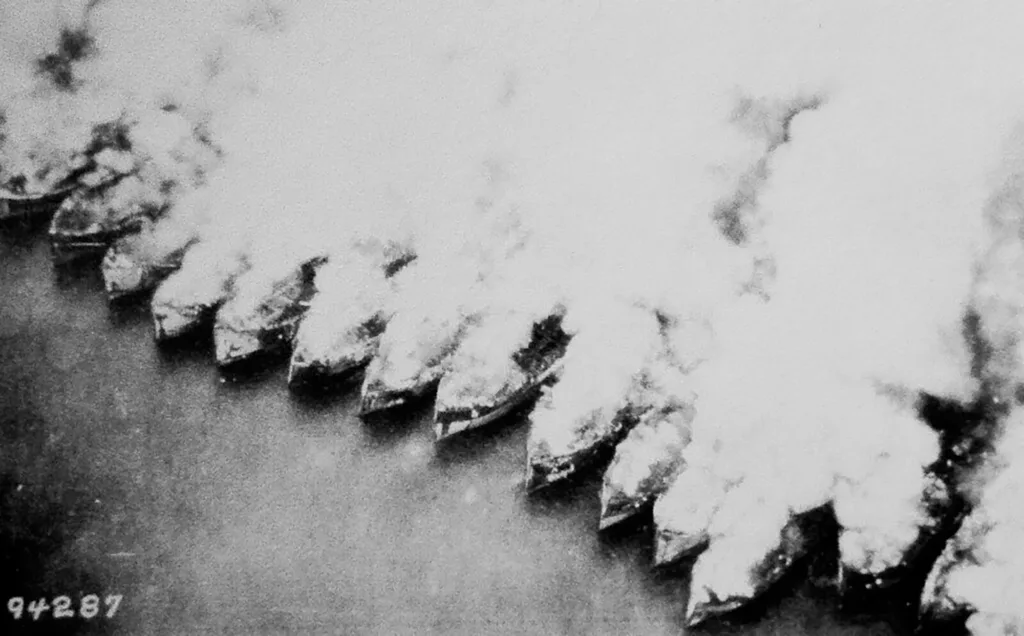
Grounded US Emergency Fleet vessels were burned to the waterline throughout multiple salvage periods at Mallows Bay in order to ease the recovery of their scrap metal.U (nited States National Archives)
Any kind of hard material attracts fauna in water, says Andrey Vedenin, a marine biologist at the Senckenberg Research Institute in Germany, who was not involved in the Mallows Bay study but co-authored a separate new paper that detailed wildlife thriving on war detritus in the Baltic Sea. That research, published in Communications Earth & Environment, found nearly five times more individual life-forms per square meter on the munition objects than on nearby sediment.
“The wildlife will, for sure, congregate in and around such structures. [They] should provide a huge variety of niches with all the complicated mazes inside the wrecks,” Vedenin says, “especially if the area is mostly unavailable for humans and human activity, like fishing.”
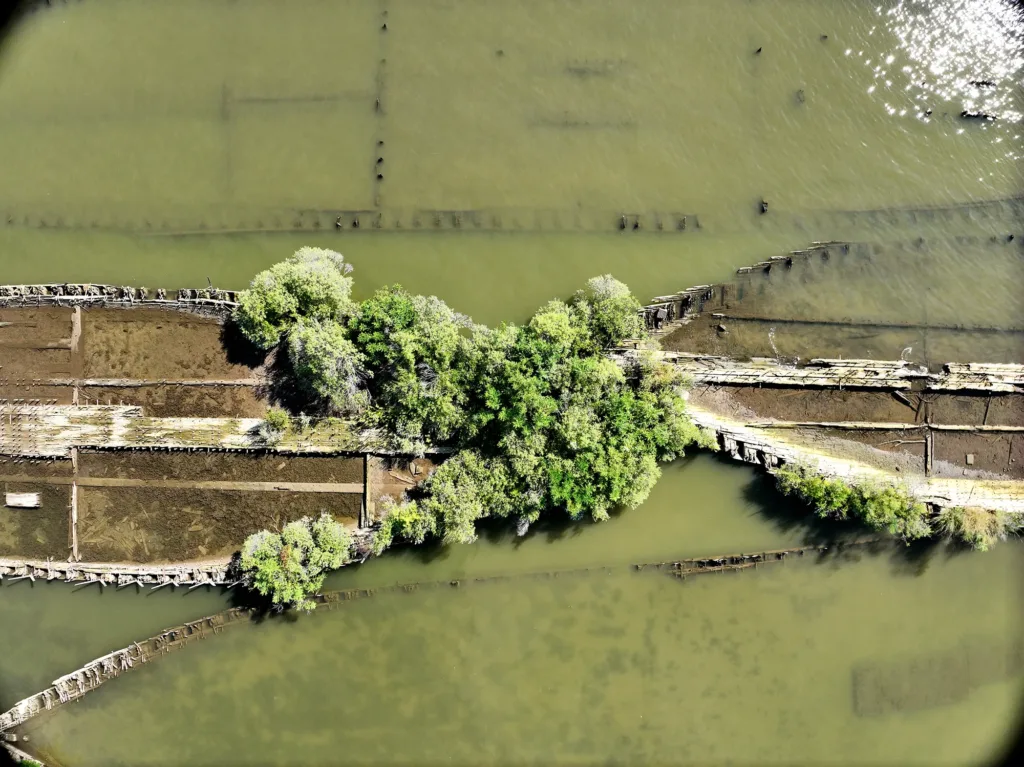
Novel, human-influenced habitats form where the wrecks of the “Ghost Fleet” meet. Here, the Alpaco and Buckhorn rest end-to-end. (Duke Marine Robotics and Remote Sensing Lab)
The Potomac River flows into the Chesapeake Bay, which runs into the Atlantic Ocean. When high tides arrive, water brings silt into the bay. Then, as the tide goes out, the silt settles on the ship structures. Over decades, soil accumulates, and birds or small mammals drop off seeds. “It’s like this positive spiral, right?” Johnston says. “You create a structure, animals make use of it, and in doing so, they bring seeds of other plants, which then grow.”
When Johnston and his colleagues at the Duke University Marine Lab received National Science Foundation funding to build a drone center to study coastal ecosystems, they sought a new local coast to investigate. While looking for one on Google Earth, they stumbled on a weird pattern in the Potomac. As they zoomed in, dozens of shipwrecks appeared. They had found their spot.
At the time, the National Oceanic and Atmospheric Administration and the Maryland Department of Natural Resources were developing a proposal to turn Mallows Bay into a National Marine Sanctuary. Researchers had nailed down the site’s historical and cultural importance but needed more insight into its ecological significance. Johnston’s Marine Robotics and Remote Sensing lab collected the necessary data in 2016, and Mallows Bay became a National Marine Sanctuary in 2019.
→ Read the entire article on the Scientific American website.
External Web Site Notice: This page contains information directly presented from an external source. The terms and conditions of this page may not be the same as those of this website. Click here to read the full disclaimer notice for external web sites. Thank you.
